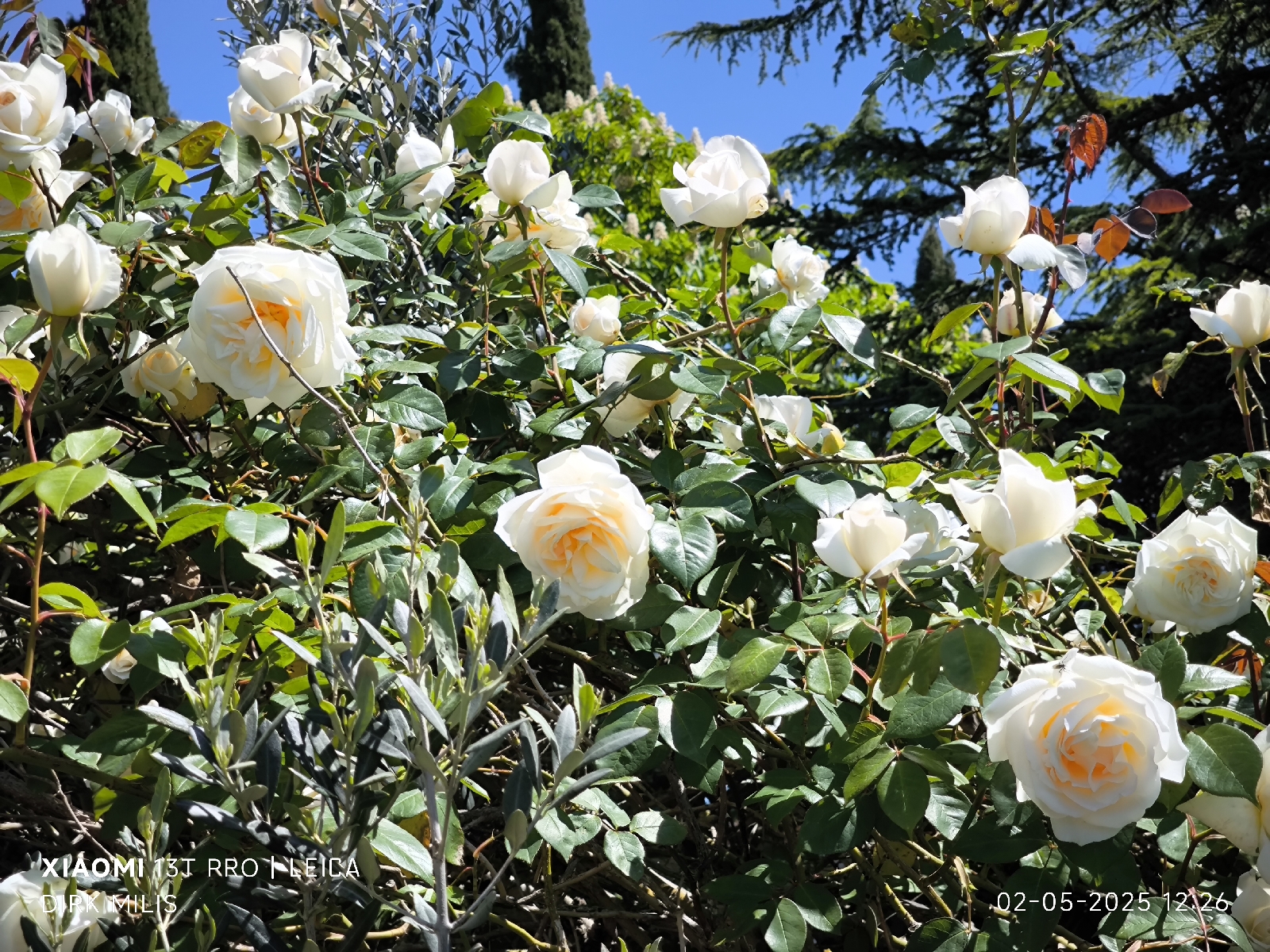After some brainstorming it was decided that Lens roses from Belgium will graft the roses and when they are ready they will be send to Loubert roses in France and Vivaio Fior di rosa in Italy. So these two nurseries will start selling Helga's roses within two years. Also Lens will start selling some of the varieties.
The trip to Umbria was to make a selection of the vast collection of Helga. Only the very rare and unique varieties made it to the list.
Umbria has been subject to extreme drought the past couple of years and last summer Helga was really desperate as her garden was about to perish but thankfully it started to rain in September and not a day too soon.
Here is the final list of varieties that will be grafted. Not only Giganteas but also very rare China's and Teas:
* Belle Blanche: White sport of Belle Portugaise (Gigantea hybrid)
* Étoile de Portugal: Marvelous red to fuchsia pink climber. Very rare (Gigantea hybrid)
* Susan Louise: Seedling of Belle Portugaise. Same flowers as her mother but reblooming! and much smaller. Only known in the USA. (Gigantea hybrid)
* Nessie: Gigantea hybrid bred Kim Rupert. Almost extinct
* Sénateur Amic: Almost extinct Gigantea hybrid by Nabonnand. Many imposters in commerce
* Flying colors: Seedling of R. Gigantea ex Crépin bred by Alister Clark. Carmine pink to soft pink, big single flowers
* Traverser: Alister Clark Gigantea hybrid. Large, double, soft pink flowers
* Squatter's dream: Alister Clark Gigantea hybrid. Warm yellow with bronz shading, single flowered
* Lady Mann: Alister Clark Gigantea. Large, bright pink, double flowers
* Nancy Hayward: Alister Clark Gigantea hybrid. Large, red, single flowers. Very beautiful
* Courier: Alister Clark Gigantea hybrid. Light pink, double, large blooms. Beautiful
* Emanuella de Mouchy: Not Irène Bonnet and not Marie Robert. Probably the real Nabonnand Gigantea hybrid
* Amber Cloud: Viru Viraraghavan Gigantea hybrid. Single, bronze yellow flowers showing their stamen. In great abundance. Big climber. Pollinators rose
* Odorata X: Unknown white China. Climbing. Very exquisite flowers
* Perfumed Butterfly: Outstanding oriental fragrance. Big single flowers
* Archiduc Joseph climbing: Only known climbing sport of the famous Tea Archiduc Joseph. Constant blooming. Magnificent !
* Maebara's dream: Viru Viraraghavan Gigantea hybrid. Magnifique, big HT shaped flowers in a pristine white color with yellow center. Outstanding! Six meters
* Fluffy Bourbon: Mystery rose. Big, very full, China pink, Bourbon shaped flowers. Big shrub. Very beautiful
* Maréchal Niel: Not rare but this specimen of the famous climbing Tea is extremely vigorous and strong. Comes from a garden near Helga's home
It's good to mention again that Gigantea hybrids are Hardy but not below zone 8b. They can take as low as - 12 Celsius. If the roots and base are protected they can survive -16 Celsius. Most regions of The Netherlands, Belgium and France are zone 8b. Some regions in the UK, Germany, Austria, Hungary etc are also 8b. Portugal, Spain and Italy but also Adriatic countries are very suitable to grow Giganteas.
Here are some pics from Helga's garden:
Susan Louise
Belle Blanche
Odorata X
Maebara's dream
Fluffy Bourbon
Étoile de Portugal
Amber cloud
Archiduc Joseph climbing
Archiduc Joseph climbing








